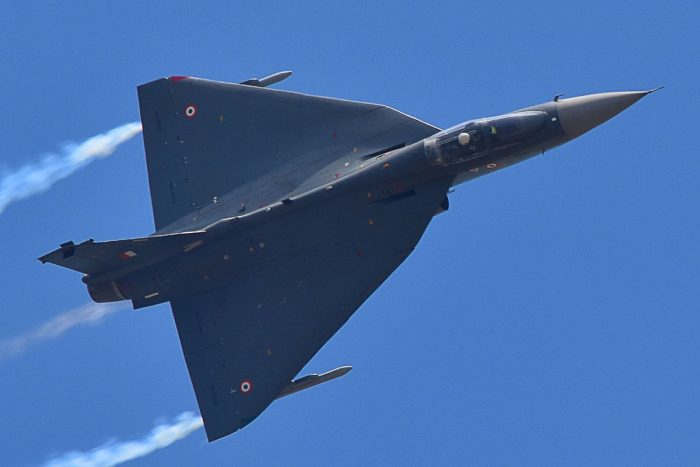
Why Did India Reject Eurojet Engine In Favor Of GE F404 To Propel Its Tejas Fighter Jets?

Indian DRDO’s Decision: GE F404 Engine for Tejas Fighter Jets Over Eurojet Engines
The Future of Indian Air Force: Tejas Fighter Jets, Developed by HAL
The development of the HAL Tejas fighter is considered a flagship project under Prime Minister Narendra Modi’s ‘Make in India’ initiative.
India had for long relied on the Kaveri engines developed by the Defence Research and Development Organisation (DRDO). The home-grown low bypass twin-spool turbofan Kaveri jet engine was slated to provide an 80 KN power pack and adequate ‘thrust to weight’ ratio for the Tejas fighter.
However, it was deemed insufficient for the requirements of the fighter jet.
To meet India’s need to field a modern fighter jet, it had to find a new engine that is of international standards. It shortlisted two engines for the Tejas: the Eurojet EJ200 engine and General Electric’s GE F404 engine.
The EJ200 Engine
The Eurojet EJ200 is a military low-bypass turbofan engine that has been developed by the Munich-headquartered EuroJet Turbo GmbH.
The engine powers the Eurofighter Typhoon multi-role fighter jet. It is largely based on the Rolls-Royce XG-40 technology demonstrator that was developed in the 1980s.
The EJ200 engine has also been used in the Bloodhound LSR supersonic land speed record attempting car.
Despite the fighter jet engine being smaller and simpler in layout than its contemporaries, according to Rolls Royce, the EJ200 still delivers an unprecedented power-to-weight ratio for a fighter jet.
The engine possesses next-generation technology, power for multi-role capability, and a high thrust-to-weight ratio, making it ideal for the most demanding military aircraft applications
The GE Engine
Produced by GE Aviation, the GE F404 is a family of afterburning turbofan engines falling in the 10,500-19,000 lbf (47-85 kN) class (static thrust).
The engine provides a maximum thrust of 11,000 lbf (48.9 kN) and a thrust of 17,700 lbf (78.7 kN) with an afterburner. The overall pressure ratio of the engine stays at 26:1, the Bypass ratio is 0.34:1, with the Thrust-to-weight ratio being 4.8 (dry), 7.8 (afterburning).
 Why India Chose GE Engine
Why India Chose GE Engine
As per reports, when India looked at the possibility of procuring the EJ-200 engines for the Tejas fighters, they had the Eurofighter Typhoons in mind as well.
If the engines were built within India for the Tejas fighter, the Eurofighter would benefit from a fully amortized engine line while also being entitled to offset credits for the ‘made-in-India’ Eurofighter EJ200 engines.
This would in turn reduce the price of the Typhoons to India, which could have been a big advantage for a fighter jet that was considered advanced but expensive.
On the other hand, with the GE F404 engines, India’s Tejas fighters would get engines that possessed the much-needed stability and reliability to the Tejas fighter jet at a time when New Delhi’s rivals Beijing were having engine troubles with the Chengdu J-20 stealth fighters.
According to General Electric itself, the F404 is one of the most versatile engines in its class, making it a compelling option for applications around the world.
The engine powers fighter jets like the Boeing T-7 Red Hawk advanced jet trainer, the South Korean KAI T-50 Golden Eagle light combat aircraft, the Northrop F-20 Tigershark, the Lockheed Martin F-117 Nighthawk, and the McDonnell Douglas F/A-18 Hornet.
With the history of powering such incredible aircraft, it was no doubt that the American engines truly had a very high caliber and met all international standards.
The F404 engine provides higher power, improved fuel efficiency, and increased mission capability for the combat-proven Boeing F/A-18C/D Hornet. It seems India wanted to go for the best when it came to Tejas fighter jets.
Earlier, the engine has already been praised by former Indian Air Force Air Chief Marshal Birender Singh Dhanoa, who said that the American-made engines had excellent fuel efficiency and that he had rarely seen that among the contemporary fighter jets that he had flown during his career.
Authors Profile
Follow EurAsian Times on Google News





